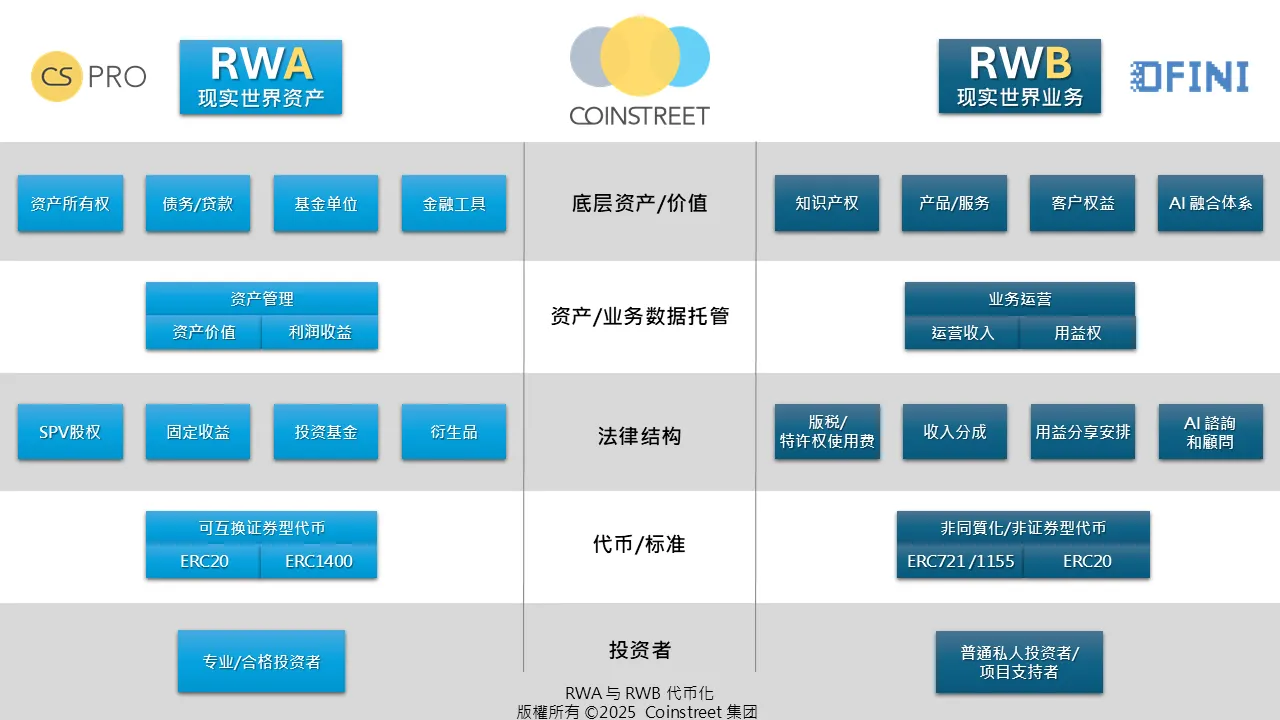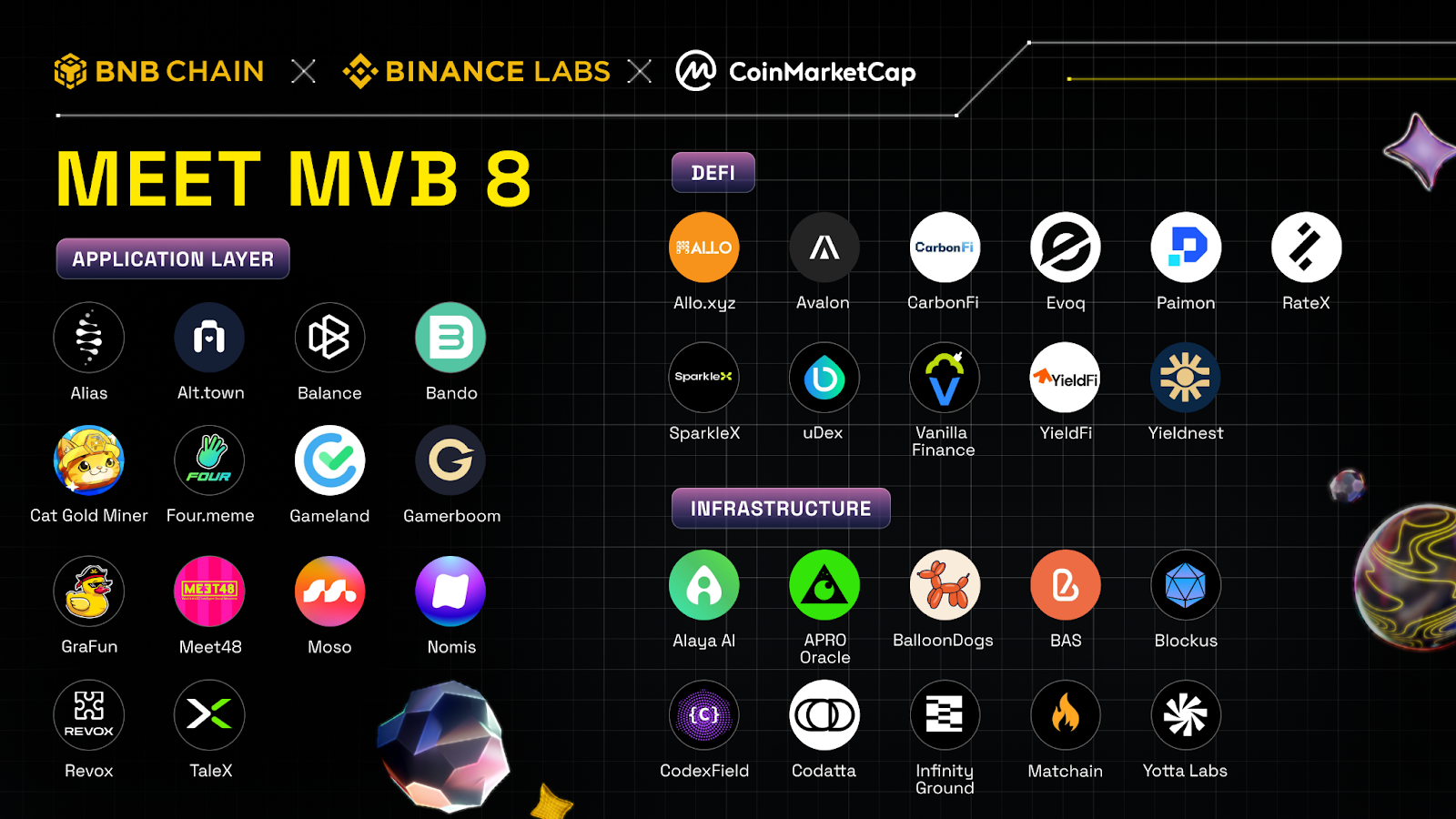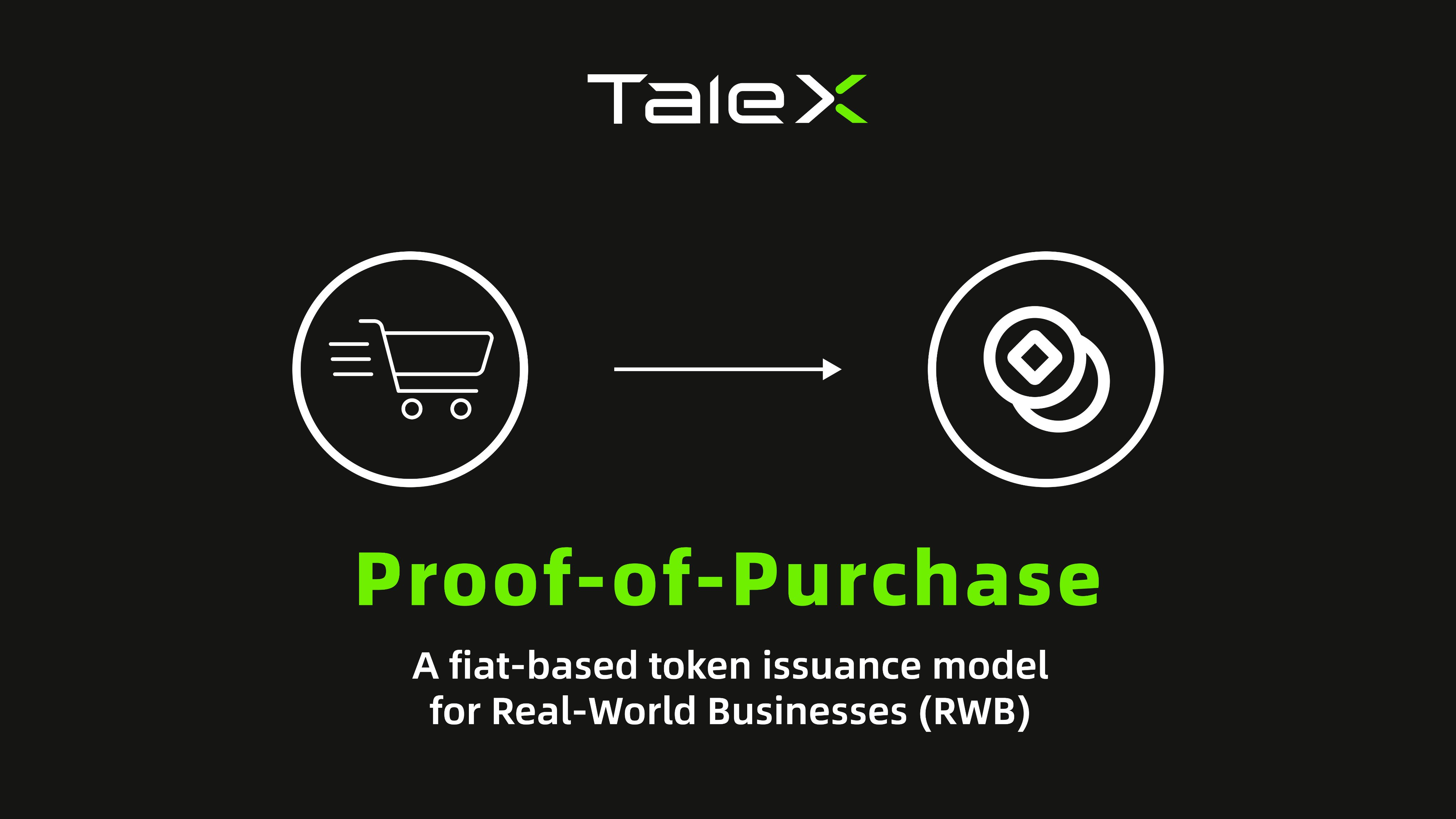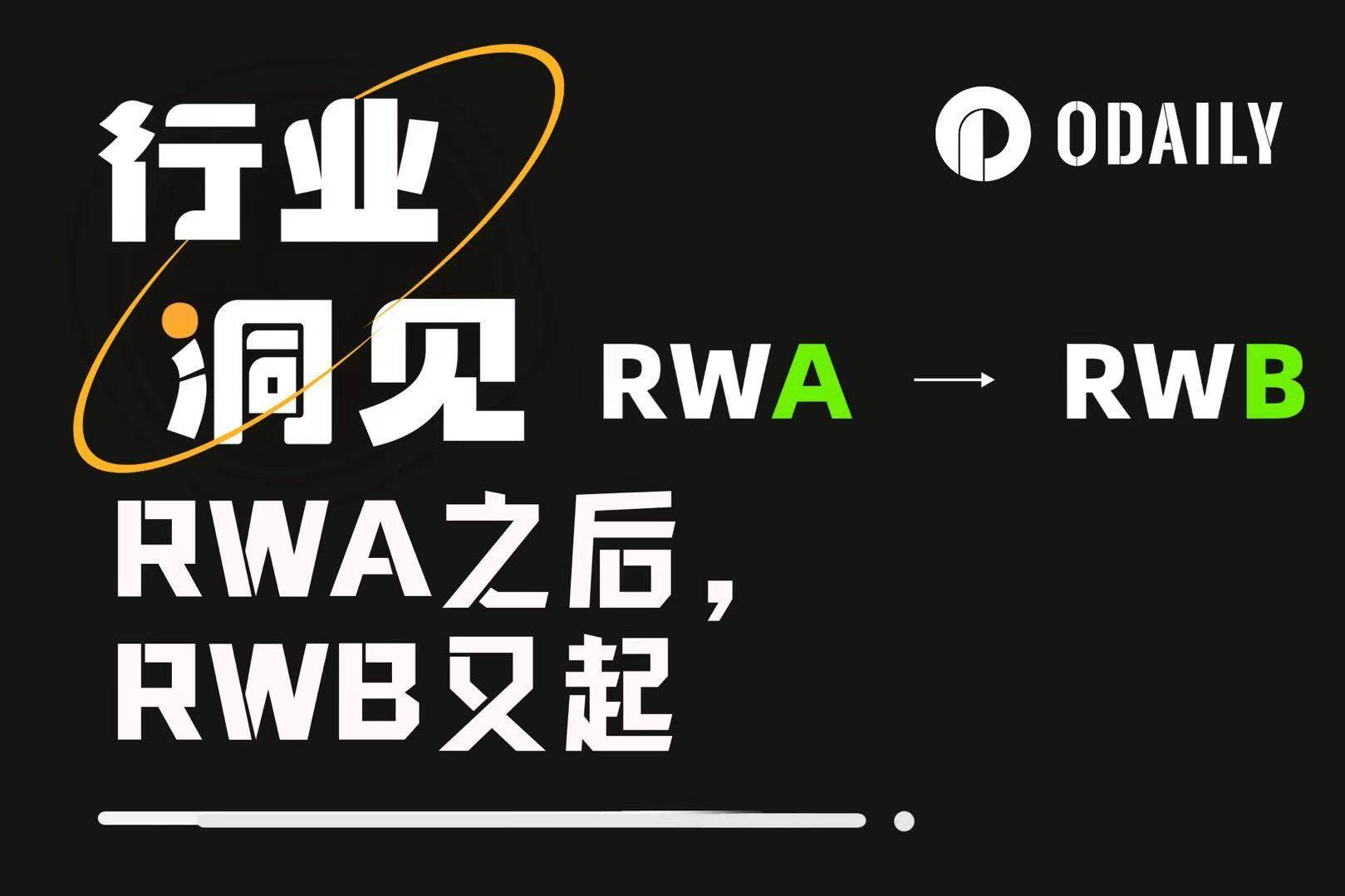Original|Odaily Planet Daily (@OdailyChina)
Undoubtedly, RWA (Real World Assets) has become one of the biggest hotspots in the crypto market. Data from RWA.xyz shows that the total market value of global RWA assets (including stablecoins) has approached $32 billion, with the number of on-chain holders exceeding 400,000 and a monthly growth rate of up to 9.22%.
At the same time, a new concept called RWB is quietly emerging and gradually moving from the crypto circle to the mainstream. What is RWB? How does it differ from RWA? Can it take over from RWA and become the next narrative in the industry? Odaily Planet Daily will analyze these questions for readers.
RWB Introduction: Real World Business or Just Another Buzzword?
RWA stands for Real World Assets; the full name of RWB has different interpretations.
The currently widely accepted explanation is Real World Business, meaning the tokenization of operational businesses in the real world (such as physical enterprises, supply chains, or service processes) through blockchain, allowing investors to hold "business equity tokens" to share in business profits or decision-making rights. It expands RWA from static assets to dynamic business models, supporting micro-financing, community-driven initiatives, and decentralized governance.
Another interpretation is Real World Blockchain, referring to the practical application of blockchain technology in real-world scenarios (such as supply chains, transportation, or identity verification), emphasizing practicality and cross-industry integration rather than pure financial speculation. This is commonly seen in projects like the Real World Blockchain Association (RWBA), which focuses on the infrastructure support for RWA.
A more niche explanation is Real World Behavior, referring to the tokenization of "real behavior data" of users on the blockchain (such as behavior points or AI training data), especially in applications related to transportation, primarily combining blockchain technology with the sharing economy, the Internet of Things, and intelligent transportation systems to optimize travel-related services.
In short, these different interpretations correspond to different models:
- The first can be understood as the tokenization of actual businesses and processes on-chain, mainly used for business financing;
- The second leans more towards a technical solution, primarily serving the on-chain of information data;
- The third is similar to blockchain technology as an aid, focusing on quantifying behavior data and integrating it with systems like the sharing economy and the Internet of Things.
Currently, the RWB concept is still in its early development stage, and there is no consensus or clear definition in either the crypto or traditional industries.
RWA is Asset Tokenization, RWB is Business Tokenization
Regarding the comparison between RWA and RWB, Coinstreet founder and CEO Samson Lee published a detailed article titled “Paradigm Shift in Financial Markets: The Competitive Evolution of RWA and RWB — A Dual-Track Strategy Under the Wave of Tokenization” in April this year, although it did not receive much attention or large-scale discussion in the industry, its viewpoints still hold certain reference significance.

Currently, the value of RWB lies in the blockchain digitization of business operations, product sales, revenue streams, commercial contracts, intellectual property, and customer rights, indirectly bypassing regulations related to securities financing, providing new financing channels for small and medium-sized enterprises, and offering new investment targets for ordinary investors, thereby lowering the investment threshold to some extent.
Moreover, RWB further broadens the scope of real-world business; corporate intellectual property, operational income, and various business products can all be tokenized on the blockchain. Thus, not only can the real-world assets involved in RWA be quantified, digitized, and tokenized; the future revenues, decision-making rights, and revenue dividends involved in RWB can also be transformed through blockchain technology, achieving tokenization and digitization.
Taking the emerging coffee chain brand BeanFi mentioned by Samson in the article as an example, it is said that the company tokenized 10% of its operating income for the next five years and completed $20 million in financing within just 3 hours, with over 50,000 retail investors participating. (Note from Odaily Planet Daily: This information has not been confirmed by actual sources, and another article mentioned that the financing amount for this case was only $500,000. Based on the existing information, this project may have already failed.)
It has been proven that, unlike the relatively mature narrative and business model of RWA with actual cases, the true implementation of RWB still has a considerable distance to cover.
RWB Has Not Gained Mainstream Attention, but Binance and Sequoia Have Started to Bet
It is worth mentioning that while searching for information related to RWB, the author unexpectedly discovered a project called Talex Chain, which was selected in the Binance MVB Accelerator Program Season 8 List along with projects like Four.meme, Meet 48, and Balance in October 2024. According to the founder's X platform account profile, this project may have also received support from the well-known investment firm Sequoia.

MVB 8 List
The project’s founder Chari and his team have also written a series of articles about the RWB business model, proposing a fiat-based token issuance model called PoP (Proof of Purchase) and citing Binance founder CZ's views on "transaction mining" as a model endorsement. They also mentioned: “There is no problem with transaction mining. This is a form of Proof of Purchase. However, simply pushing up the token price to attract more people to participate in mining will only lead to ineffective volume brushing. It will affect the team's and users' judgment of the project. If we can ignore the price collapse and focus on iterating product experience, ultimately users are using it well, and repurchasing tokens with normal fees, then what’s wrong with that? Very crypto native. Co-build and share.”

It is evident that the Talex project views transaction mining as a significant case for RWB issuance, where users contribute transaction fees through trading interactions, and the platform uses the fee income to repurchase platform tokens, while users receive rewards through platform token incentives, thus achieving an "ecological closed loop."
However, it should be noted that this model still heavily relies on the continuous inflow of external funds, which tests not only the platform's product optimization and user experience but also whether the platform token price can be maintained and whether the entire incentive system can operate stably.
Additionally, it is interesting to note that the Talex platform currently resembles a creator economy platform that integrates short dramas, e-books, animations, and other content. Whether it can attract more attention resources and liquidity through content in the future remains uncertain.
Conclusion: RWB Seems to Provide a Foundation for Liquidity in Real World Businesses
In any case, although the RWB concept has not received much attention and faces a series of regulatory compliance, asset management, and other risks, it indeed provides a new idea for financing small and medium-sized enterprises. Just like the gravel used to lay a road, RWB may serve as a foundation for companies with real business operations in the real world to access flexible funding, while participants gain corresponding emotional value, loyalty incentives, and economic returns.
As for whether it can carve out a new development path in the tokenization process of traditional financial assets, it remains to be seen with time.
免责声明:本文章仅代表作者个人观点,不代表本平台的立场和观点。本文章仅供信息分享,不构成对任何人的任何投资建议。用户与作者之间的任何争议,与本平台无关。如网页中刊载的文章或图片涉及侵权,请提供相关的权利证明和身份证明发送邮件到support@aicoin.com,本平台相关工作人员将会进行核查。





